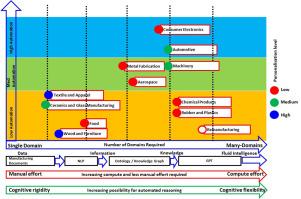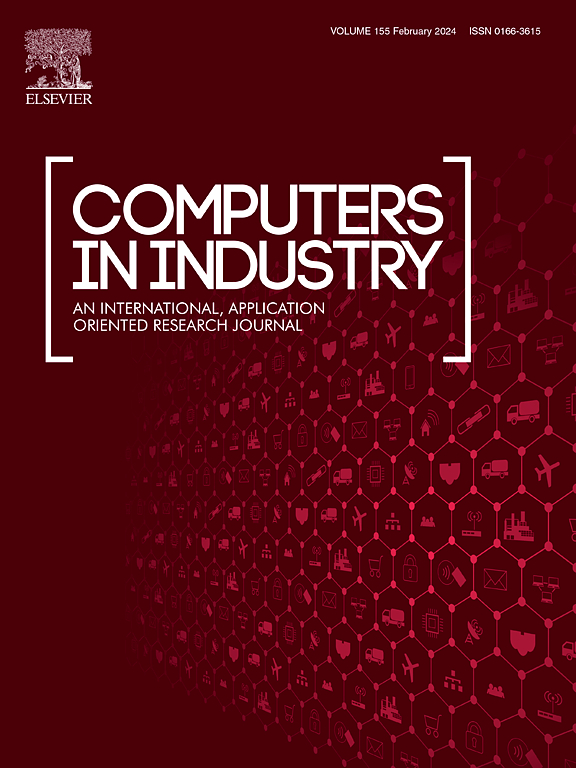从本体到面向自动化的知识增强大型语言模型:工业5.0中实现人机协作的决策指导
IF 9.1
1区 计算机科学
Q1 COMPUTER SCIENCE, INTERDISCIPLINARY APPLICATIONS
引用次数: 0
摘要
大型语言模型(llm)的快速发展引起了人们对其在制造系统中的潜在应用的兴趣,特别是在工业5.0的背景下。然而,确定何时实现llm与其他自然语言处理(NLP)技术、本体或知识图相比,仍然是一个悬而未决的问题。本文为在各种工业环境中选择最合适的技术提供了决策指导,强调了制造中的人机协作和弹性。我们研究了法学硕士、本体和知识图谱的起源和独特优势,根据产品从设计到制造所需的领域或学科数量,评估了它们在不同工业场景中的有效性。通过这个比较框架,我们探索了法学硕士可以增强人机协作的机器人技术的具体用例,同时强调了本体和知识图在低依赖性或资源受限领域的持续相关性。此外,我们还解决了部署这些技术的实际挑战,例如计算成本和可解释性,为制造商在工业5.0中导航基于语言的人工智能工具的不断发展的前景提供了路线图。我们的研究结果为明智的决策提供了基础,帮助行业专业人士优化基于语言的模型的使用,以实现可持续、有弹性和以人为中心的制造。我们还提出了一个大型知识语言模型体系结构,该体系结构提供了基于任务复杂性和可用计算资源的透明度和配置的潜力。本文章由计算机程序翻译,如有差异,请以英文原文为准。

From Ontologies to Knowledge Augmented Large Language Models for Automation: A decision-making guidance for achieving human–robot collaboration in Industry 5.0
The rapid advancement of Large Language Models (LLMs) has resulted in interest in their potential applications within manufacturing systems, particularly in the context of Industry 5.0. However, determining when to implement LLMs versus other Natural Language Processing (NLP) techniques, ontologies or knowledge graphs, remains an open question. This paper offers decision-making guidance for selecting the most suitable technique in various industrial contexts, emphasizing human–robot collaboration and resilience in manufacturing. We examine the origins and unique strengths of LLMs, ontologies, and knowledge graphs, assessing their effectiveness across different industrial scenarios based on the number of domains or disciplines required to bring a product from design to manufacture. Through this comparative framework, we explore specific use cases where LLMs could enhance robotics for human–robot collaboration, while underscoring the continued relevance of ontologies and knowledge graphs in low-dependency or resource-constrained sectors. Additionally, we address the practical challenges of deploying these technologies, such as computational cost and interpretability, providing a roadmap for manufacturers to navigate the evolving landscape of Language based AI tools in Industry 5.0. Our findings offer a foundation for informed decision-making, helping industry professionals optimize the use of Language Based models for sustainable, resilient, and human-centric manufacturing. We also propose a Large Knowledge Language Model architecture that offers the potential for transparency and configuration based on complexity of task and computing resources available.
求助全文
通过发布文献求助,成功后即可免费获取论文全文。
去求助
来源期刊

Computers in Industry
工程技术-计算机:跨学科应用
CiteScore
18.90
自引率
8.00%
发文量
152
审稿时长
22 days
期刊介绍:
The objective of Computers in Industry is to present original, high-quality, application-oriented research papers that:
• Illuminate emerging trends and possibilities in the utilization of Information and Communication Technology in industry;
• Establish connections or integrations across various technology domains within the expansive realm of computer applications for industry;
• Foster connections or integrations across diverse application areas of ICT in industry.
 求助内容:
求助内容: 应助结果提醒方式:
应助结果提醒方式:


